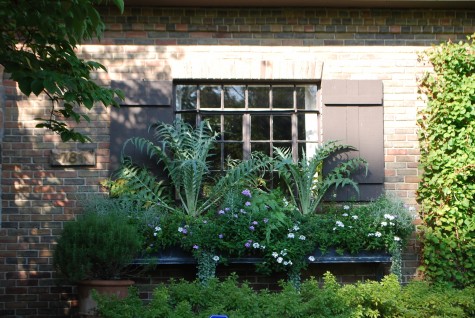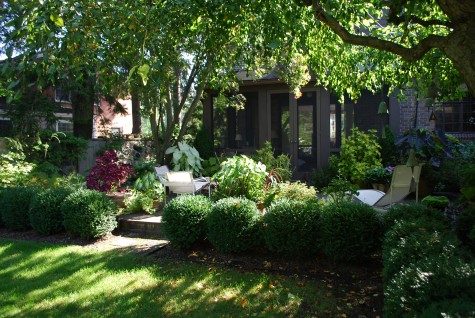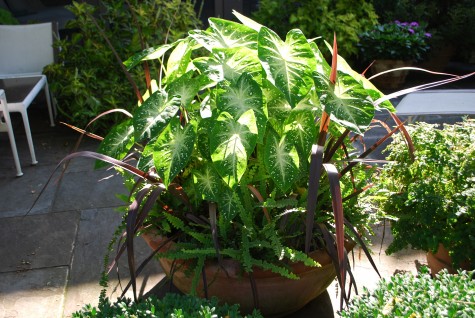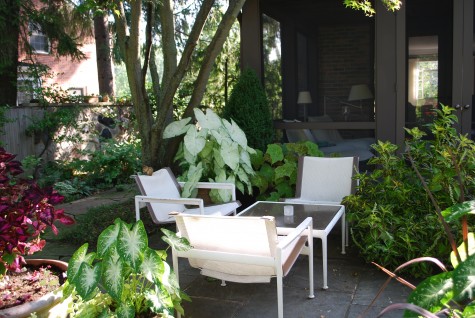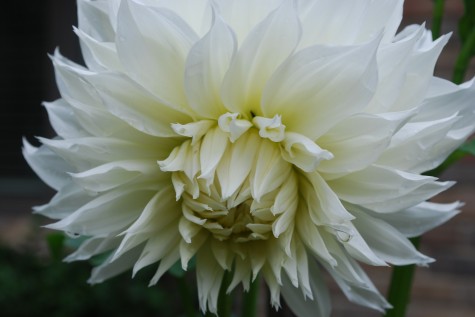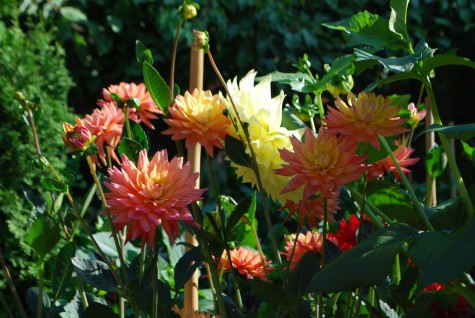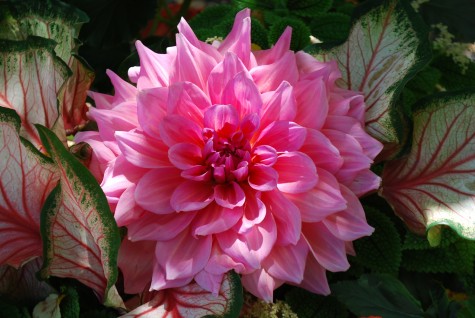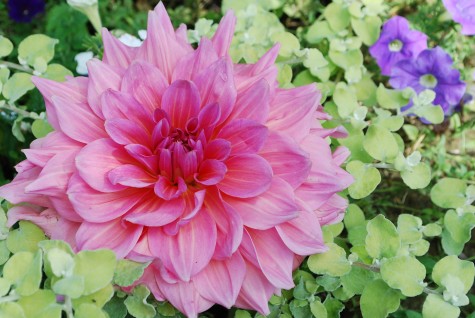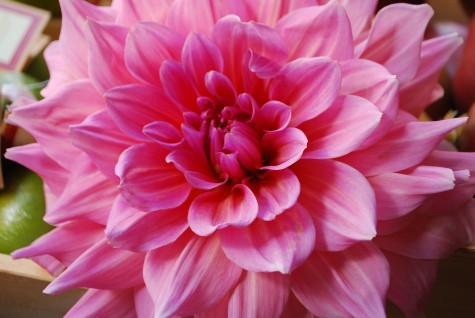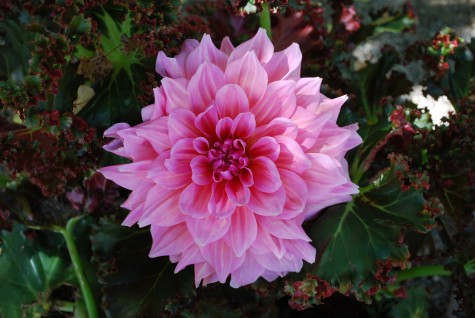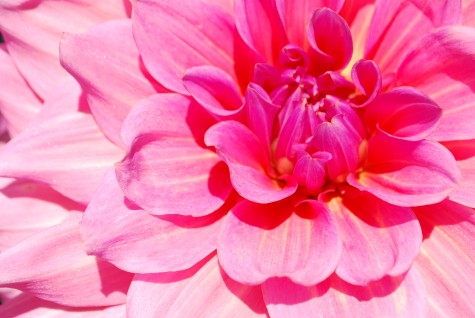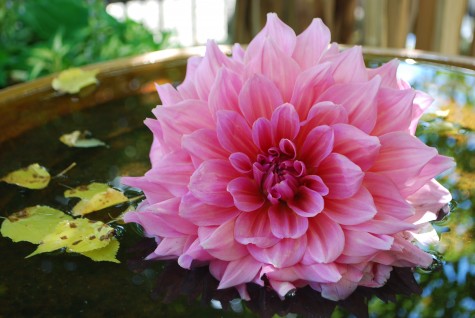 People make changes in their landscapes for lots of reasons. For some, it may be the end of the trampoline era. Kids need space to play, and entertain friends. This need can be the organizing metaphor of a landscape. I have lots of clients with mini-soccer fields, trampolines, play sets, tree houses, picnic tables, basketball hoops, bike racks, mud rooms, shed sized doll houses, badminton nets, ice rinks-you get the idea. This client had just accompanied her youngest child to her college orientation. It was time for a change in the landscape. She thought a firepit would be a good substitute feature for the trampoline-that part was easy to visualize.
People make changes in their landscapes for lots of reasons. For some, it may be the end of the trampoline era. Kids need space to play, and entertain friends. This need can be the organizing metaphor of a landscape. I have lots of clients with mini-soccer fields, trampolines, play sets, tree houses, picnic tables, basketball hoops, bike racks, mud rooms, shed sized doll houses, badminton nets, ice rinks-you get the idea. This client had just accompanied her youngest child to her college orientation. It was time for a change in the landscape. She thought a firepit would be a good substitute feature for the trampoline-that part was easy to visualize.
 The rear yard was very shallow and long, and dominated by grass. Even the bed of euonymus under this aging Japanese maple had a big flat spot in its curve out into the yard. She did not want to intrude on any flat grassy space. This is child friendly. Old arborvitae hedges screened most of the rear lot line. Every landscape move was immediately apparent-from one end to the other.
The rear yard was very shallow and long, and dominated by grass. Even the bed of euonymus under this aging Japanese maple had a big flat spot in its curve out into the yard. She did not want to intrude on any flat grassy space. This is child friendly. Old arborvitae hedges screened most of the rear lot line. Every landscape move was immediately apparent-from one end to the other.
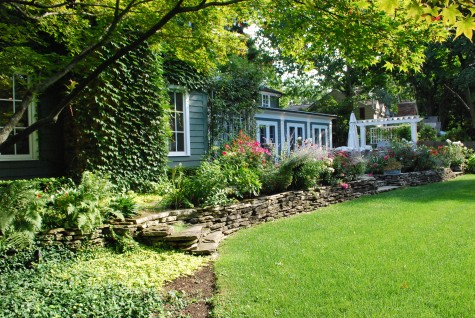 Small perennial borders were planted on top of a series of dry stack stone walls, laid at the grade of a big bluestone terrace. This places the shasta daisies out of range of the soccer ball, and rightly so. Lawn ran right up to those walls. A large upper level bluestone terrace set at the grade of the floor of the house provided a place to have guests, and large table, and a built in barbeque. On this terrace, a small fountain and fountain pool, set on top of the bluestone.
Small perennial borders were planted on top of a series of dry stack stone walls, laid at the grade of a big bluestone terrace. This places the shasta daisies out of range of the soccer ball, and rightly so. Lawn ran right up to those walls. A large upper level bluestone terrace set at the grade of the floor of the house provided a place to have guests, and large table, and a built in barbeque. On this terrace, a small fountain and fountain pool, set on top of the bluestone.
 The fountain dominated a fairly large space on the terrace, and proved difficult to integrate into a seating area. A group seated here would be looking into the pedestal of a fountain. After a resolution of the trampoline issue, where would the fountain look best? This space would be great for a couch, coffee table and chairs-for adult events. An adult experience of the garden and landscape meant the fountain would need a new home.
The fountain dominated a fairly large space on the terrace, and proved difficult to integrate into a seating area. A group seated here would be looking into the pedestal of a fountain. After a resolution of the trampoline issue, where would the fountain look best? This space would be great for a couch, coffee table and chairs-for adult events. An adult experience of the garden and landscape meant the fountain would need a new home.
 Directly opposite the terrace, a small hedge of boxwood faced down some large and open growing white pines belonging to a neighbor. Though the stairs did not come off the terrace centered on this space, that was the least of the troubles. The problem here-a view to no where. A way too good of a view to a neighboring house.
Directly opposite the terrace, a small hedge of boxwood faced down some large and open growing white pines belonging to a neighbor. Though the stairs did not come off the terrace centered on this space, that was the least of the troubles. The problem here-a view to no where. A way too good of a view to a neighboring house.
 We planted 11 12 foot thuja nigra-these are a match for the existing arborvitaes. This screened the neighbor’s house from view. These evergreens were planted in a shallow arc-what need would there be to continue the long straight line of cedars down the lot line? The idea here-create a space, shelter, for that fountain.
We planted 11 12 foot thuja nigra-these are a match for the existing arborvitaes. This screened the neighbor’s house from view. These evergreens were planted in a shallow arc-what need would there be to continue the long straight line of cedars down the lot line? The idea here-create a space, shelter, for that fountain.
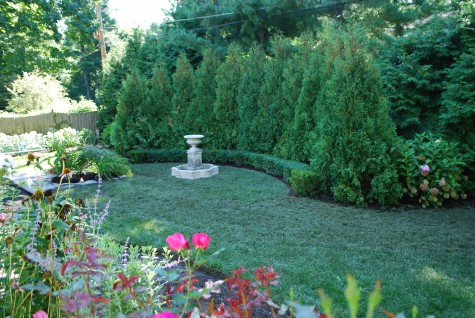 The existing boxwood were dug out, and replanted in front of the arbs. This gives a very crisp green edge to the cedars. The fountain and its basin were relocated into the grass. The gap between the first arb on the arc, and the first arb on the lot line-we filled that with an existing hydrangea. This landscape is starting to look much more interesting. The fountain looks much stronger, given this placement.
The existing boxwood were dug out, and replanted in front of the arbs. This gives a very crisp green edge to the cedars. The fountain and its basin were relocated into the grass. The gap between the first arb on the arc, and the first arb on the lot line-we filled that with an existing hydrangea. This landscape is starting to look much more interesting. The fountain looks much stronger, given this placement.
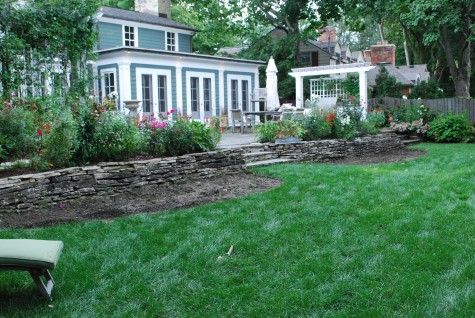 The dry stack stone wall whose function for many years was to keep the kids, dogs, and footballs out of the upper level perennial garden and terrace-we cut curving beds in front of them. My idea was to link the upper level terrace with the lower level landscape. This meant I needed to move the very tall, and visually blocking, perennials on the top level, to the ground plane. This will give my client much more space for her herbs on the top level. And an integrating view of the lower level landscape. A clear view to the lower landscape, softened by roses, phlox, coneflower and daylilies would make the lower landscape part of the experience of entertaining on the terrace.
The dry stack stone wall whose function for many years was to keep the kids, dogs, and footballs out of the upper level perennial garden and terrace-we cut curving beds in front of them. My idea was to link the upper level terrace with the lower level landscape. This meant I needed to move the very tall, and visually blocking, perennials on the top level, to the ground plane. This will give my client much more space for her herbs on the top level. And an integrating view of the lower level landscape. A clear view to the lower landscape, softened by roses, phlox, coneflower and daylilies would make the lower landscape part of the experience of entertaining on the terrace.
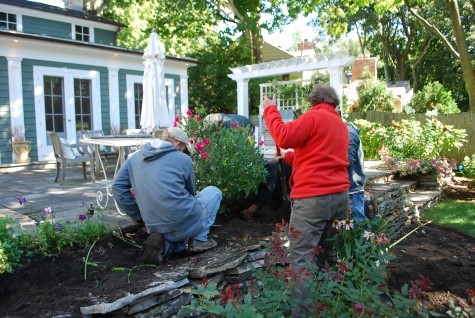 Moving perennials-right now is the perfect time. The nights are cool, the rains are regular. We did move some roses-with giant rootballs. Four of us handled the digging, lifting, and resetting of each rose. This will work, or it won’t. If it doesn’t, a new rose is easy to plant. The other perennials will move easily. This is the right time.
Moving perennials-right now is the perfect time. The nights are cool, the rains are regular. We did move some roses-with giant rootballs. Four of us handled the digging, lifting, and resetting of each rose. This will work, or it won’t. If it doesn’t, a new rose is easy to plant. The other perennials will move easily. This is the right time.
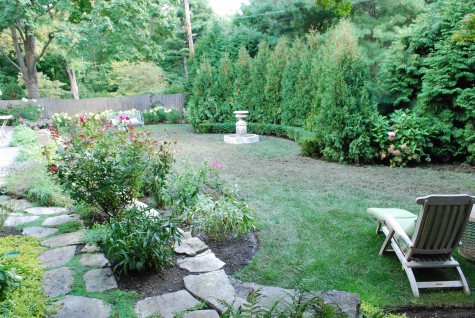 I am sorry for the state of the grass-we have had so much rain. Even though we put down plywood to travel across the lawn, it has taken a terrible beating. It will be back thriving within a week or so. This is an entirely different landscape look. The lawn has become a generously curving path from one part of the yard to another. There are distinctly different spaces; rooms, if you will. The curving beds are a great contrast to the rectilinear overall space.
I am sorry for the state of the grass-we have had so much rain. Even though we put down plywood to travel across the lawn, it has taken a terrible beating. It will be back thriving within a week or so. This is an entirely different landscape look. The lawn has become a generously curving path from one part of the yard to another. There are distinctly different spaces; rooms, if you will. The curving beds are a great contrast to the rectilinear overall space.
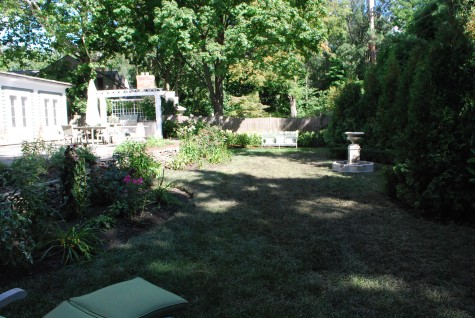 This picture is not the best, but it should be clear that the bluestone terrace has become a big part of the greater landscape.
This picture is not the best, but it should be clear that the bluestone terrace has become a big part of the greater landscape.
 As for the trampoline-it is gone. In its place, a firepit surrounded by a decomposed granite terrace. There are some very good looking curves going on here. Any landscape can be transformed with a few fresh ideas. These fresh ideas-straight from my client. Her request? A new era, please.
As for the trampoline-it is gone. In its place, a firepit surrounded by a decomposed granite terrace. There are some very good looking curves going on here. Any landscape can be transformed with a few fresh ideas. These fresh ideas-straight from my client. Her request? A new era, please.

